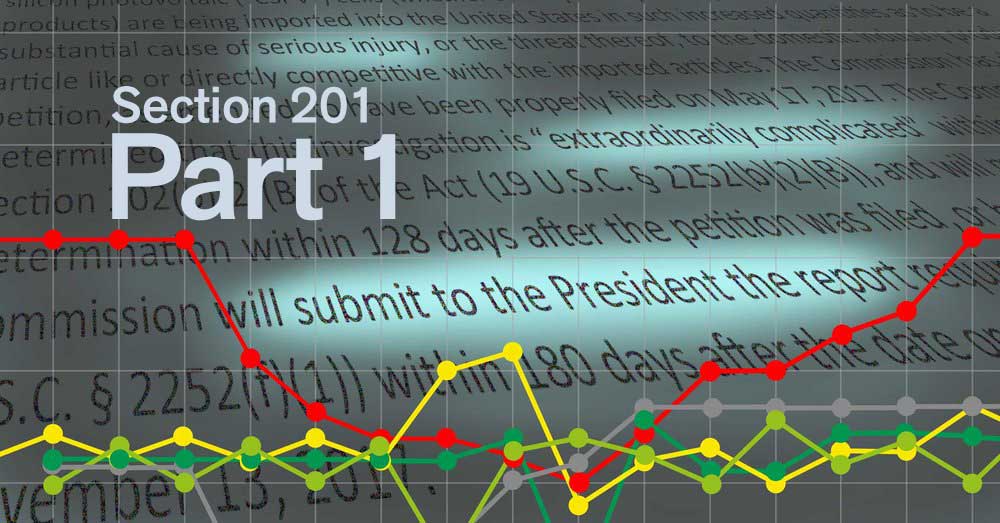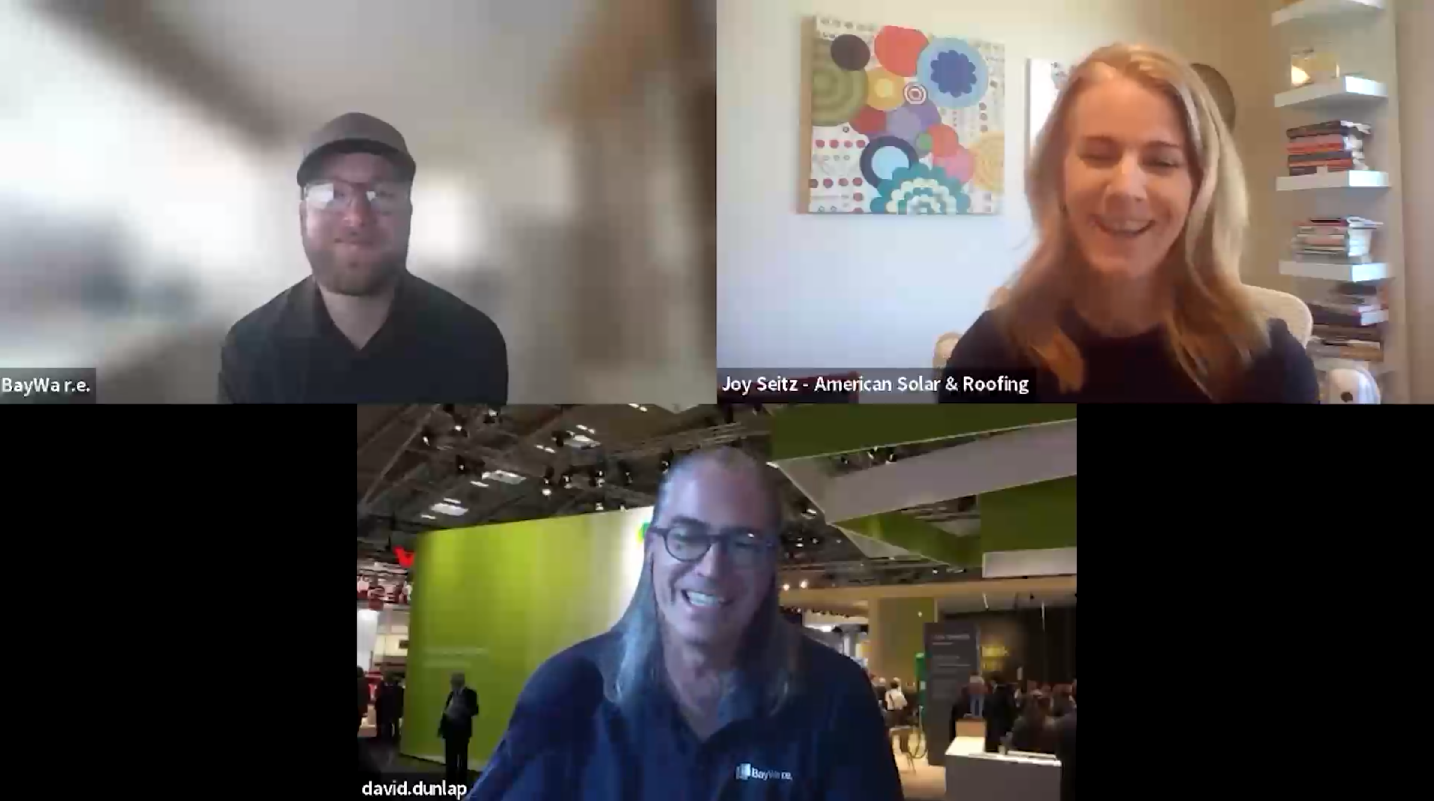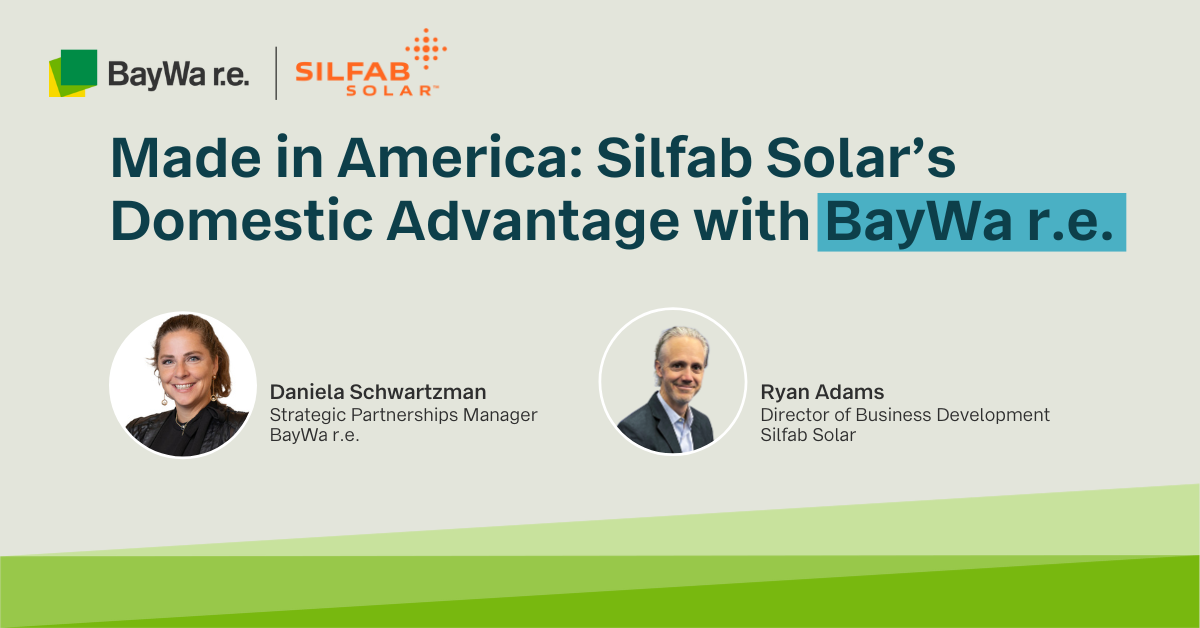 Illustration, Tom Miller
Illustration, Tom Miller
I had many discussions last week at SPI concerning the impact of the upcoming trade case on solar contractors. While there are many far-reaching implications for the industry, most pressing for contractors is the question of what to do about the existing backlog of contracts, which were presumably sold at a specific price and might need to be installed with higher-priced equipment than anticipated.
The tariff outcome is unpredictable. The scenario most frequently anticipated is a moderate injury ruling, such as a floor price of $.58/W, as opposed to a ruling for the full requested floor price of $.78/W. It is also possible that a tariff, rather than a floor price, will be established. This could cause price increases for modules even if they are already priced above the anticipated floor. Obviously, at $.78/W the issues illustrated below will be more dramatic.
Most solar contractors operate with a 30-60 day backlog of projects, so it stands to reason that on the date a decision is made regarding the trade case, there will be 30-60 days’ worth of jobs “at risk.” What can a contractor do to mitigate that risk? There are four basic “levers” at a contractor’s disposal that I can think of:
- Ensure there is a clause in your contract that allows you to back out in the case of increased equipment costs.
- Allow, in your contract, for re-pricing a system, within a mutually acceptable range. A vehicle to achieve this could be utilizing open-book pricing, and demonstrating a price increase via quotes from your supplier dated before and after the tariff decision.
- Purchasing the equipment needed to fulfill the backlog in advance of the tariff decision. (Note – in the current module shortage, you are more likely to find premium modules than Tier 1 Chinese, so this option is not universally viable.)
- Increase your selling prices in advance of the tariff decision so that your backlog, at the date of
price increase, is still viable.
These levers can also be combined – for example, raising your prices by enough to cover the incremental cost of tying up your storage space and cash from making an advance purchase, or simply raising your prices incrementally to “hedge” against higher equipment costs.
In the table below, the following terms are used:
- “Margin health” – assumes your margins before the tariff are healthy
- “Streamlined” vs. “Complex” – allows that altering your process for selling a project or getting it financed could increase complexity for your team, and should be considered an expense.
- “CAC” – Customer Acquisition Cost – would increase if your close rate is reduced as a result of higher cancellation rates or increased prices.
- “Backlog health” – assumes your normal state of affairs is a balanced backlog – if it is too short you may struggle to keep crews busy and right-size inventory; if it’s too long, you may lose customers who don’t want to wait.
First, evaluate the risk: do you still make a margin with the projected higher equipment costs? Is it worth just absorbing the higher cost
|
Impact on margins |
Impact on sales/financing process |
Impact on |
|
| Do nothing | Negatively impacts margins | Keeps process simple and streamlined | Supports backlog health |
Enable contract termination for contractor |
Allows margin health but could increase CAC | Increased complexity | Could reduce |
| Enable contract re-pricing | Allows margin health but could increase CAC | Increased complexity | Could reduce |
| Buy in advance | Allows margin health on jobs, but could increase operating costs (storage and cash) |
Keeps process simple and streamlined | Supports backlog health; however, modules (or cash) may not be available |
Start selling at determination |
Allows healthy margins, or even upside if assessed; however, could increase CAC via lower close rate |
Keeps |
Could reduce |
The most important factors to balance are your business’ sensitivity to weathering reduced margins for the duration of your backlog (and the degree of that margin reduction) compared with your willingness to let your backlog get lean, or even disappear, as a result of preserving margins. Do you already know if one of these factors is more important than the other?





Great job. The only other options I can think of but I believe you mentioned them in the podcast:
1. Optimizing your operations to increase productivity and decrease overhead to compensate for any margin degradation
2. Revise sales commission agreements to give your sales team skin in the game when it comes to re-evaluating contracts post-tariff
3. Consider the tariff as a call-to-action to increase backlog and make up for margin reduction through increased volume
4. Evaluate all overhead and cut overhead where you can
5. Create contingency plans to diversify your company away from your traditional business model in a worst case scenario so you will be able to maintain talented staff in the event of an industry downturn
Thanks, SK. Great additions, IMO especially #1 and 2. I would caution on your #3 that increased volume may not overcome margin reduction – depends on the overhead model, and whether there is room to saturate overhead further. Look out for an upcoming article on accounting relevant to that point. And I worry a little about diversifying. It can cause lost focus. But I agree it should be carefully considered. Appreciate you reading!
Great article, Boaz
You’ve laid out the pros and cons in a very sensible, logical way. Thank you for helping us sort out this mess so we can apply the strategy that best fits our situation. Let’s hope for a reasonable ruling.
John Parry – Solar Works, Sebastopol CA
Thanks for reading and commenting, John. I share your hope 🙂 Boaz